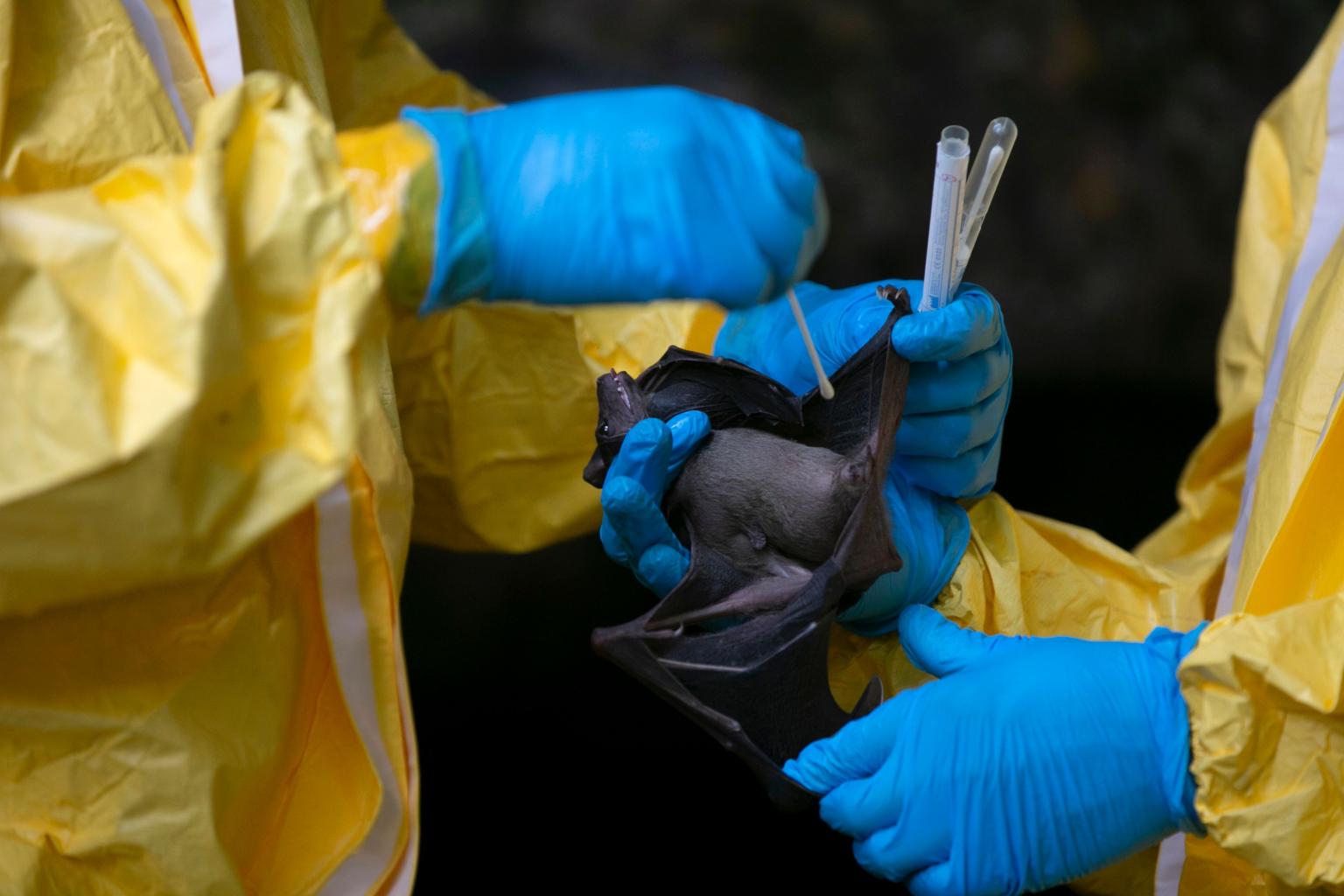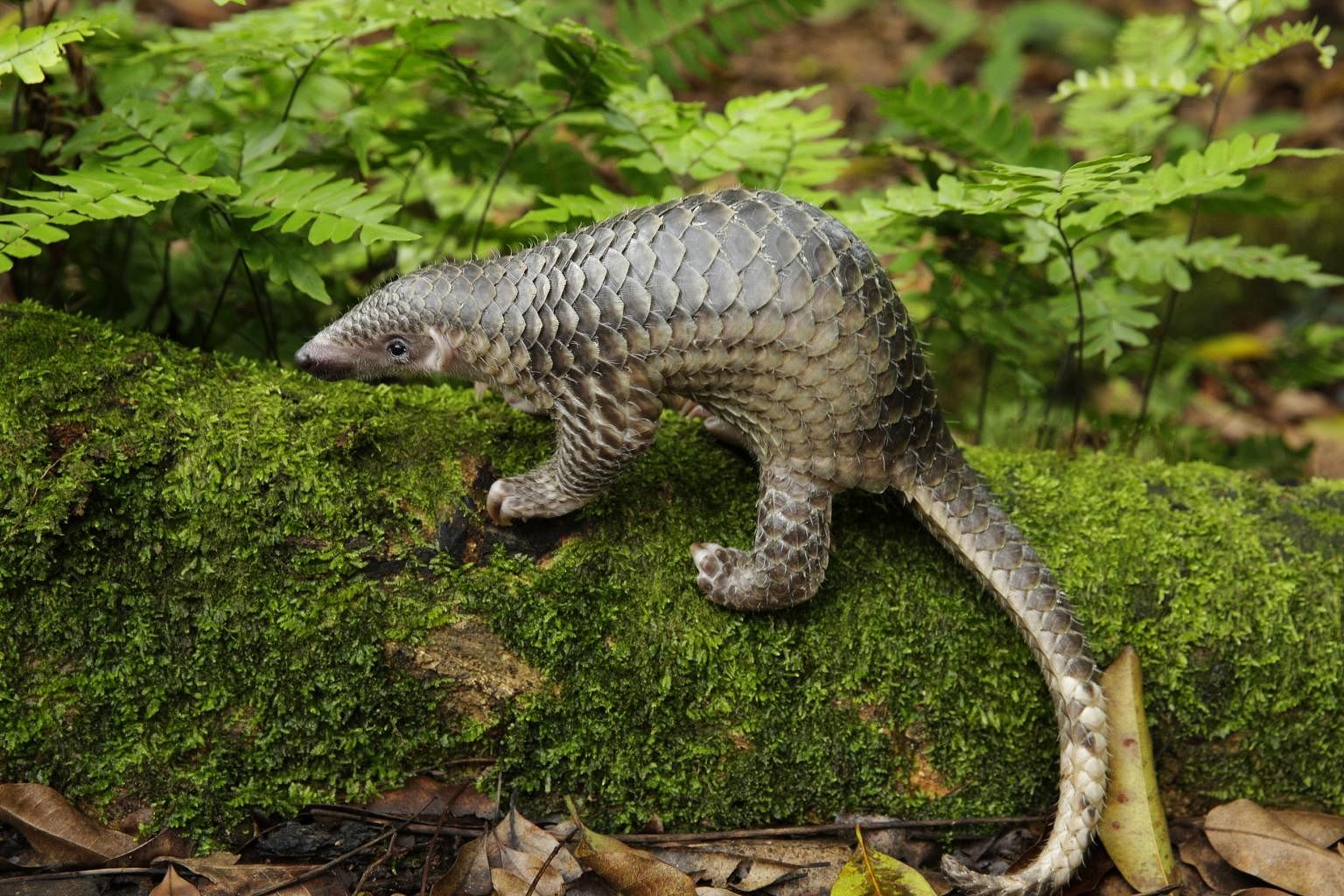Bats carrying coronaviruses closely related to the one that causes Covid-19 found outside China
Sign up now: Get ST's newsletters delivered to your inbox

The three Rhinolophus species of horseshoe bats that have so far been shown to be carriers of coronaviruses linked to Sars-CoV-2 cannot be found in Singapore.
PHOTO: AFP
Follow topic:
SINGAPORE - Horseshoe bats carrying coronaviruses very similar to the one that causes Covid-19 have been found outside China, so the pandemic may not necessarily have originated in the country, say scientists in a new study.
It is likely that the virus arrived at the Chinese city of Wuhan from elsewhere, said Professor Wang Linfa from the Duke-NUS Medical School in Singapore and one of the study's co-authors.
The study, published on Tuesday (Feb 9) in the prestigious journal Nature Communications, had found a coronavirus in the horseshoe bat Rhinolophus acuminatus in Thailand that was 91.5 per cent similar to Sars-CoV-2, the virus that causes Covid-19.
So far, the closest relative to Sars-CoV-2 has been detected in the horseshoe bat Rhinolophus affinis in China's Yunnan province - with a genetic similarity of 96.2 per cent.
In another study published as a pre-print pending peer review in January, researchers had also found - in the horseshoe bat Rhinolophus shameli in Cambodia - coronaviruses 92.6 per cent similar to Sars-CoV-2.
All three are horseshoe bats from the genus Rhinolophus. There are over 100 species in this group, which are widespread from Australia to Europe.
The three Rhinolophus species that have so far been shown to be carriers of coronaviruses linked to Sars-CoV-2 cannot be found in Singapore.
But related species such as the Blyth's horseshoe bat (Rhinolophus lepidus) and the Trefoil horseshoe bat (Rhinolophus trifoliatus) can be found here, said National University of Singapore (NUS) mammal researcher Marcus Chua.
Authors of the Nature Communications paper said their findings show that cross-border surveillance is needed to unearth the original host of the virus.
Prof Wang, the expert who confirmed that bats were the original carriers of the Sars virus which hit the globe in 2003, explained that to determine this, he thinks there has to be a genetic similarity of more than 99 per cent between the genomes of Sars-CoV-2 and the virus in the animal - as was the case during the severe acute respiratory syndrome outbreak.
Researchers had found that the virus circulating among civets - the intermediate host - was more than 99 per cent similar to the one that caused Sars in humans.
Following the antibody trail
The authors of the latest study also used serological tests to determine if bats and pangolins - another animal shown to carry coronaviruses similar to Sars-CoV-2 - had neutralising antibodies against the virus.
Neutralising antibodies are a special group of antibodies that can help to prevent the virus from latching on to the host cell and beginning its invasion.
They took blood samples from bats and pangolins in Thailand and tested them for the presence of neutralising antibodies using cPass - a neutralising antibody kit developed by Prof Wang.
Such serology tests are useful for detecting past infections, and will not indicate if the animal is currently infected.
For the bats, four out of 98 blood serum samples showed the presence of strong positive neutralising antibodies. The high level of neutralising antibodies detected among them suggests there might be a more closely related virus in Thai bats, said Prof Wang.
As for the 10 pangolins - whose countries of origin are unclear as they were confiscated by Thai authorities from the illegal wildlife trade - molecular tests that look for the presence of viral genetic material all turned up negative, indicating that none of them were currently infected.
However, one pangolin tested positive for neutralising antibodies.
Prof Wang said this shows that pangolins are highly susceptible to the coronavirus, but it is not clear yet whether they could have acted as the intermediate or transmitting host.

Wildlife management implications
In November last year, Denmark decided to cull all the mink being farmed for their fur in the country, fearing that a mutated form of coronavirus found in mink could potentially hamper the effectiveness of a future vaccine.
But Prof Wang said culling should not be an option for wildlife.
"Active surveillance and monitoring will be the way to go," he added.

NUS researcher, Mr Chua, agreed.
He said that compared with the risk of large-scale animal farming, where many animals are in close proximity to humans, the chance of zoonosis transmission from wild animals to human is lower.
"Extermination of bats is no good because studies have shown that disturbing bat habitats and attempting to cull them could result in a change in their behaviour and may also stress them out - which could cause increased virus prevalence and shedding," said Mr Chua.
What is more important, is for humans to avoid disturbing wildlife habitats, and keep a respectful distance from wild animals.
He added: "Bats perform important ecosystem services as they are bug busters that keep the insect population in the ecosystem in balance, and many are also important seed dispersers."

